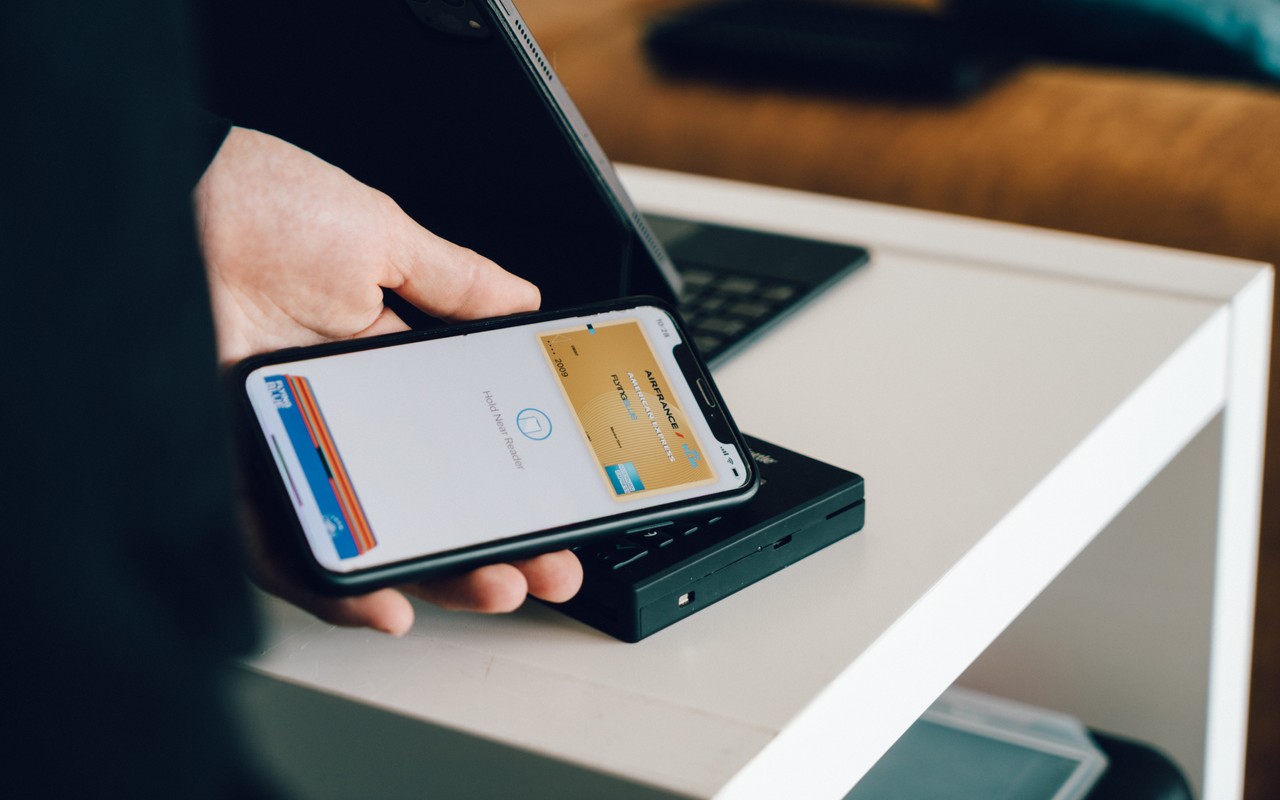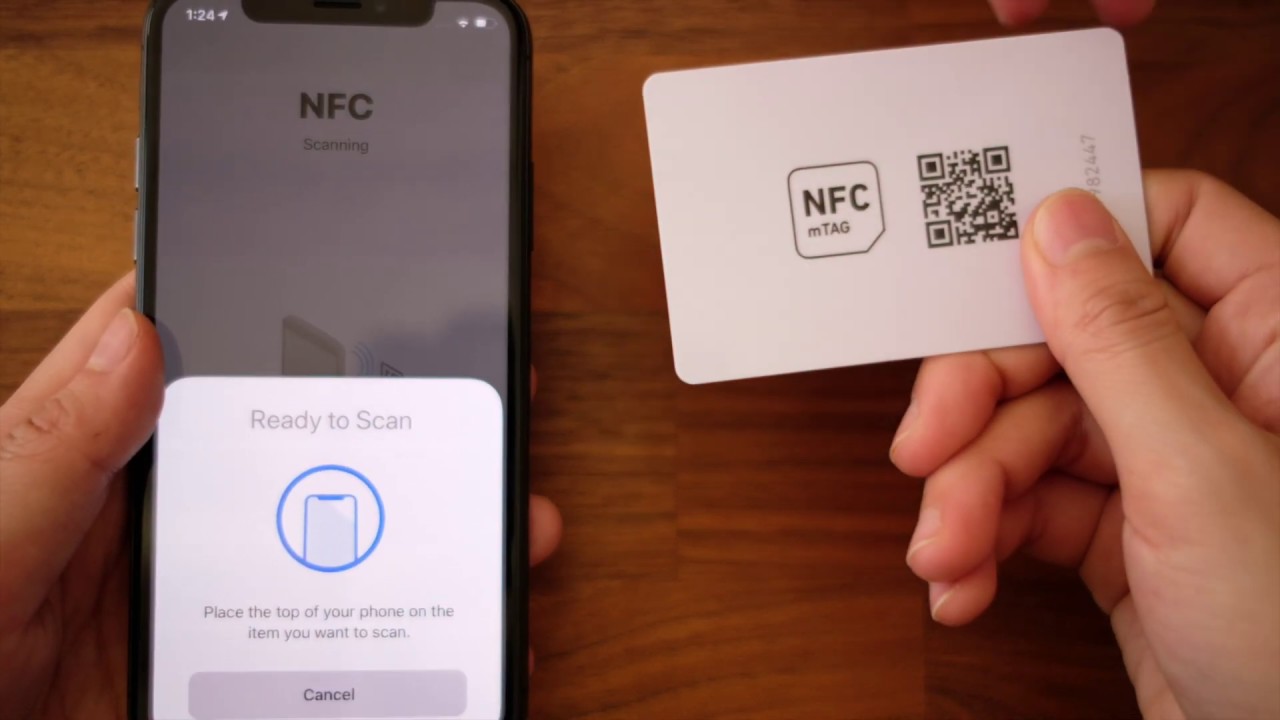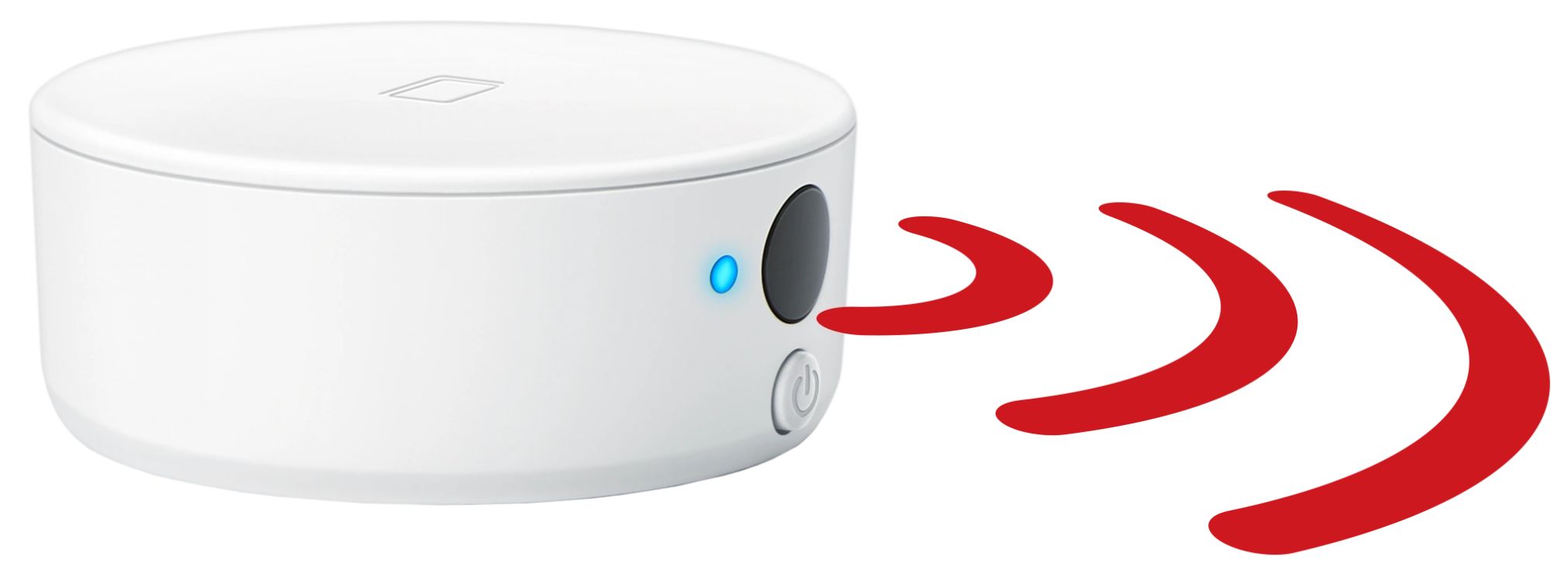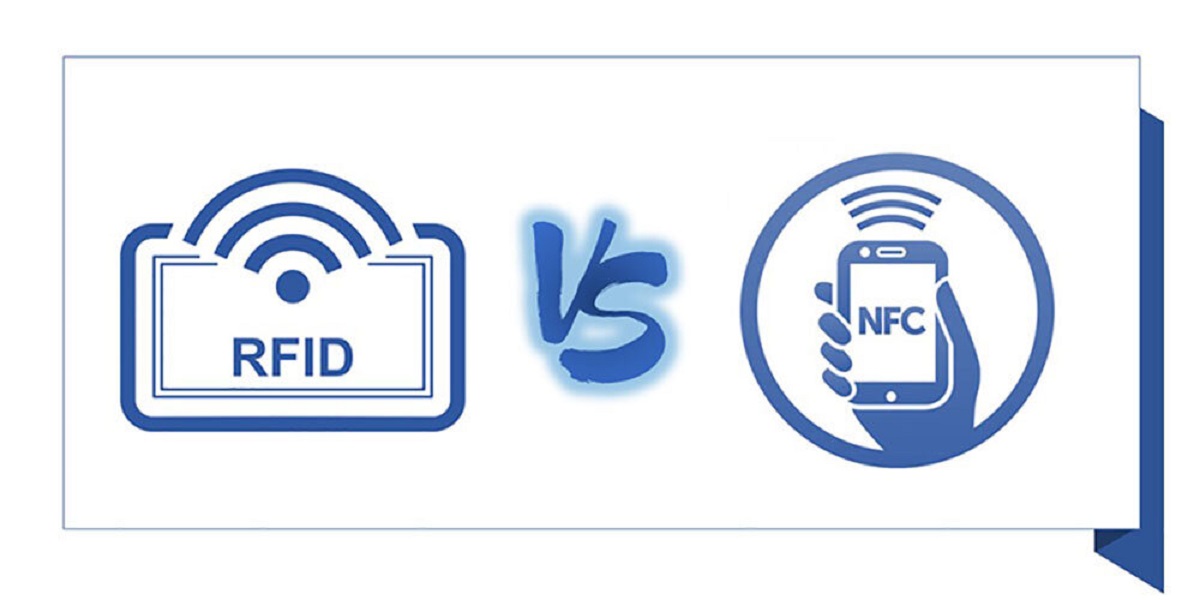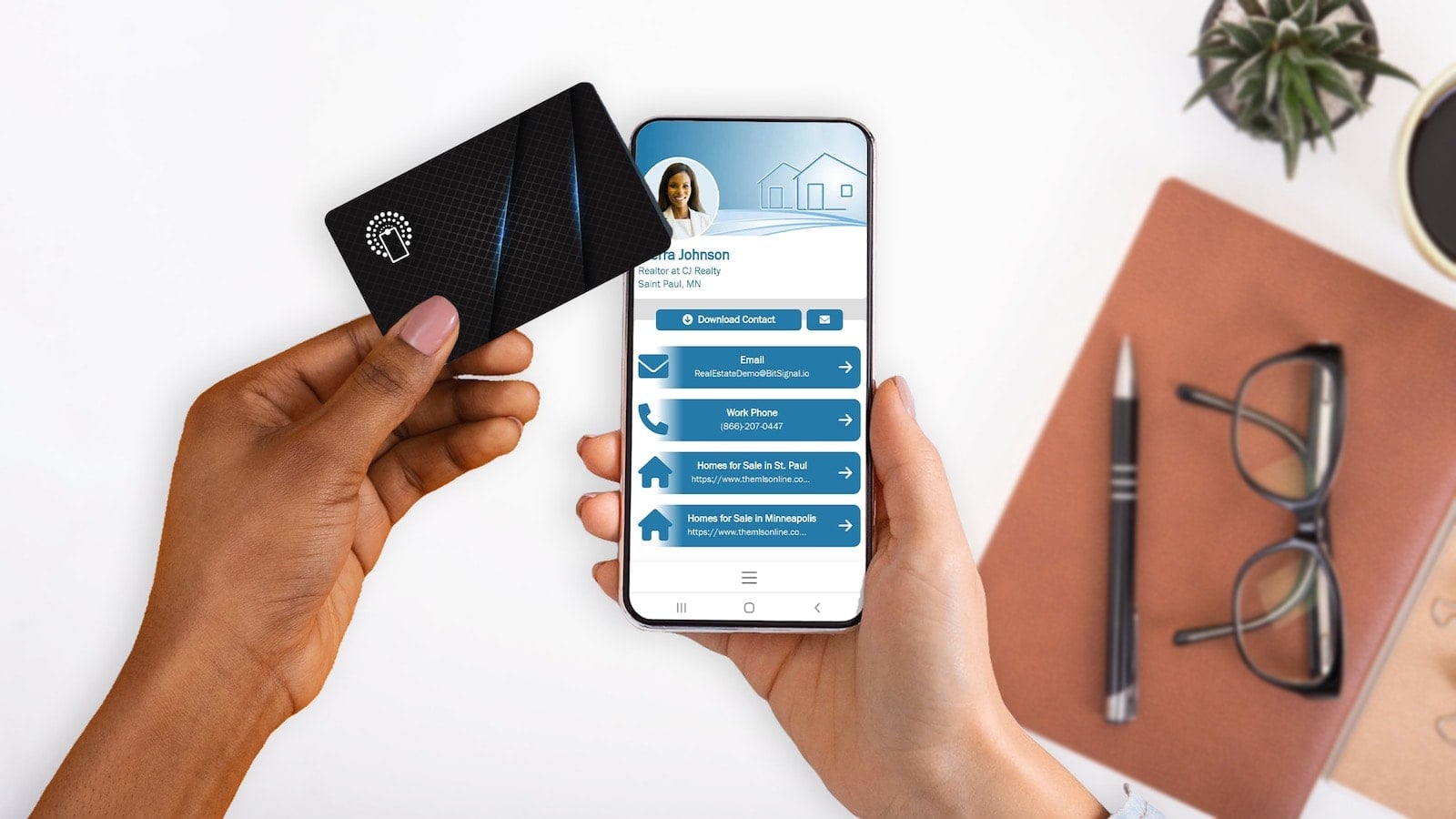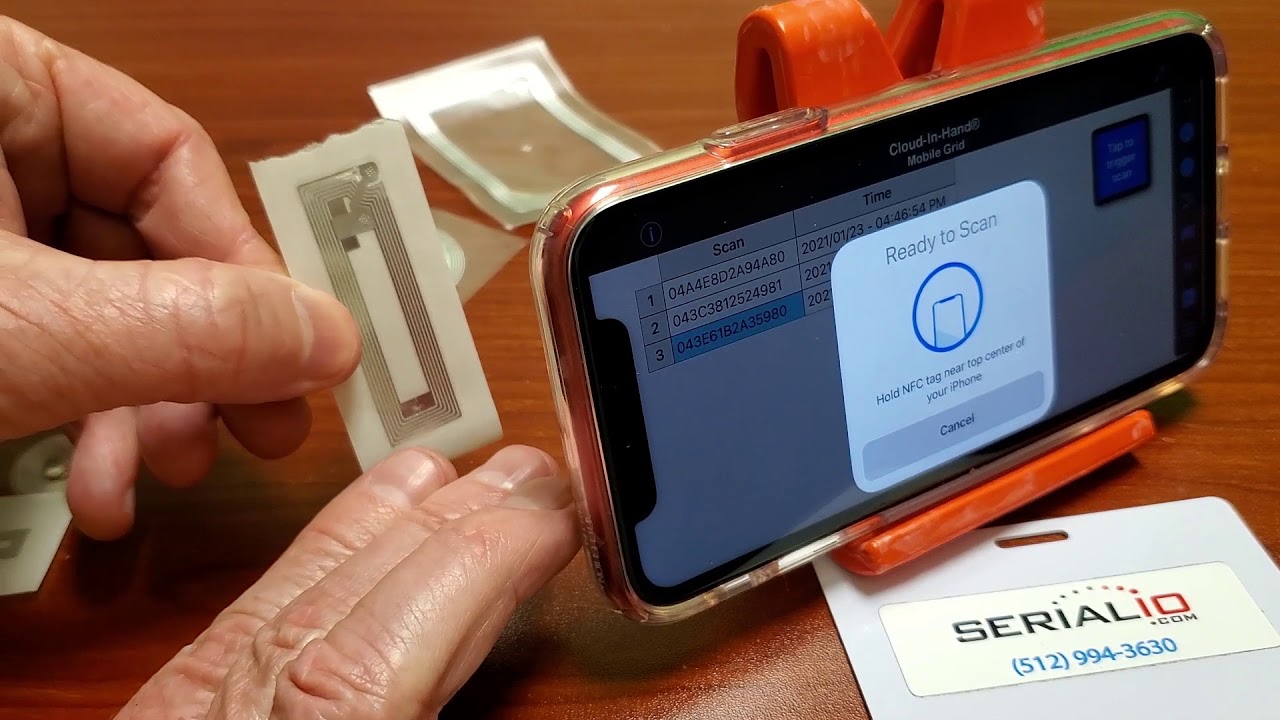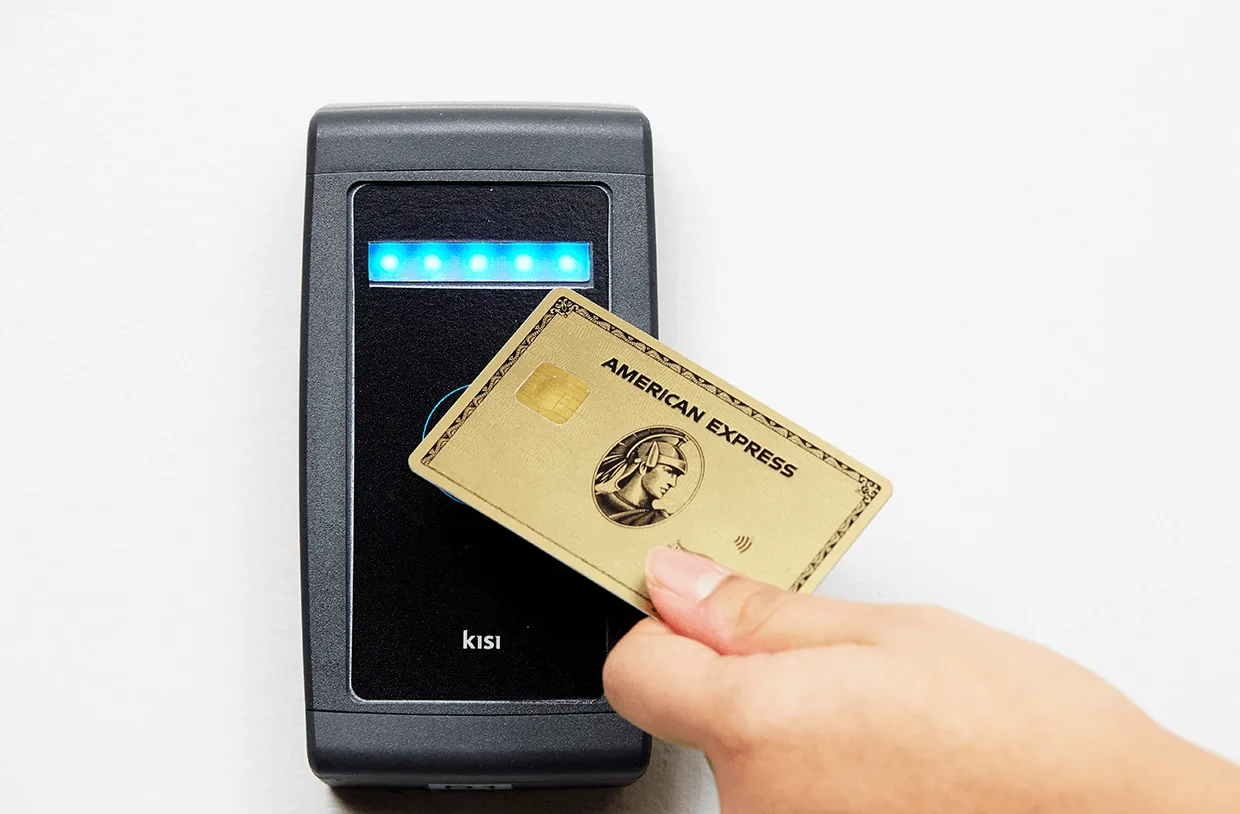What Is a NFC Reader?
A NFC (Near Field Communication) reader is a device that is used to read and write information from NFC tags or devices using short-range wireless communication technology. NFC technology enables communication between devices by simply bringing them close together, typically within a few centimeters. It operates at a frequency of 13.56 MHz and follows the ISO/IEC 18092 standard.
NFC readers play a crucial role in facilitating various applications and services that utilize NFC technology. They are equipped with a special antenna that enables them to establish a wireless connection with other NFC-enabled devices, such as smartphones, payment terminals, and access control systems.
The main purpose of an NFC reader is to read and write data stored on NFC tags or devices. These tags can be embedded in various objects, such as posters, stickers, merchandise, or even implanted in certain wearable devices. When a compatible NFC-enabled device is brought within close proximity to an NFC reader, the reader can initiate communication and exchange information with the device.
NFC readers are designed to provide a seamless and secure method of data transfer. They can read and write a variety of data types, including text, URLs, contact information, and even encrypted data for security purposes. The data transfer between an NFC reader and a device is usually initiated by a user through a tap, swipe, or simple physical contact, which makes it a convenient and user-friendly technology.
Moreover, NFC readers can support different modes of operation, depending on the specific application or use case. They can act as passive readers, where they only read information from NFC tags or devices. Alternatively, they can function as active readers, which not only read data but also communicate back to the NFC tags or devices by providing additional information or triggering specific actions.
The versatility of NFC readers makes them suitable for a wide range of applications. They are commonly used in contactless payment systems, access control systems, transportation ticketing, asset tracking, and even interactive marketing campaigns. By leveraging the power of NFC technology, NFC readers enable secure, convenient, and efficient data transfer and communication between devices.
Introduction
NFC (Near Field Communication) technology has become increasingly prevalent in our modern, interconnected world. It offers a convenient way to transfer information and perform various tasks by simply bringing compatible devices in close proximity to each other. At the heart of this technology is the NFC reader, a device that plays a crucial role in enabling communication and data exchange between devices.
NFC technology is built on a simple premise: devices can communicate wirelessly when they are brought within a few centimeters of each other. This technology operates at a frequency of 13.56 MHz and follows the ISO/IEC 18092 standard. NFC readers are equipped with an antenna that allows them to establish a connection with other NFC-enabled devices, such as smartphones, tablets, and payment terminals.
The purpose of this article is to provide a comprehensive understanding of NFC readers and their role in NFC technology. We will explore their functionalities, types, and various applications. Additionally, we will discuss the benefits and limitations of NFC technology, providing insights into its potential for future advancements.
NFC readers are designed to read and write information stored on NFC tags or devices. These tags can be embedded in a wide range of objects, such as posters, stickers, merchandise, or even wearable devices. When a compatible NFC-enabled device is brought near an NFC reader, the reader can read the information from the tag or device and initiate communication.
The applications of NFC technology are diverse and span multiple industries. NFC readers are widely used in contactless payment systems, where users can tap their smartphones or contactless cards on NFC readers to make secure and convenient transactions. NFC technology is also utilized in access control systems, enabling seamless entry to buildings or restricted areas with a simple tap of a card or smartphone.
Furthermore, NFC technology is leveraged in transportation ticketing, allowing commuters to easily use their smartphones to pay for and access public transportation. It is also used for asset tracking, where NFC tags are attached to items or equipment to monitor their movement or provide maintenance information.
In the following sections, we will delve into the technical aspects of NFC readers, the different types available in the market, their applications, and the benefits they offer in terms of convenience, security, and efficiency.
How Does NFC Technology Work?
NFC (Near Field Communication) technology is based on the principle of electromagnetic induction, which allows for communication between devices over a short range. It operates at a frequency of 13.56 MHz and uses inductive coupling to establish a connection between an NFC reader and a compatible device, such as a smartphone or payment terminal.
When an NFC-enabled device, also known as an initiator, comes into close proximity to an NFC reader, it generates an electromagnetic field. This field powers the NFC reader, enabling it to communicate with the device. The NFC reader, acting as a target, also generates its own electromagnetic field. The interaction between these fields allows for the transfer of data between the two devices.
The communication between an NFC reader and a device occurs through a process known as modulation and demodulation. During this process, the NFC reader transmits a carrier signal, which is modulated by the data to be transferred. The NFC-enabled device receives this modulated signal and demodulates it to extract the data.
NFC technology supports two modes of communication: passive and active. In passive mode, the NFC-enabled device primarily relies on the NFC reader for power and sends a response back based on the received information. In active mode, the device has its own power source and can actively communicate with the NFC reader.
One of the key features of NFC technology is its ability to support different types of data transfer. NFC tags, which can be embedded in objects or stickers, store specific types of information. When an NFC-enabled device is brought close to an NFC reader, the reader can access and retrieve this data.
Common types of data that can be transferred using NFC include text, URLs, contact information, and even encrypted data for secure transactions. This versatility makes NFC technology useful in various applications, such as mobile payments, transportation ticketing, access control systems, and interactive marketing campaigns.
Security is also a crucial aspect of NFC technology. NFC readers and devices utilize encryption algorithms to ensure the confidentiality and integrity of the transferred data. This helps prevent unauthorized access and protects sensitive information during transactions.
Overall, NFC technology provides a seamless and convenient way to transfer data between devices. Its short-range communication capabilities, combined with its versatility and security features, have made it an integral part of many everyday applications. As technology continues to advance, NFC is expected to play an increasingly important role in enabling efficient and secure communication between devices.
What Is an NFC Reader?
An NFC (Near Field Communication) reader is a device that is used to read and write information from NFC tags or devices using short-range wireless communication technology. NFC technology enables communication between devices by simply bringing them close together, typically within a few centimeters. It operates at a frequency of 13.56 MHz and follows the ISO/IEC 18092 standard.
NFC readers play a crucial role in facilitating various applications and services that utilize NFC technology. They are equipped with a special antenna that enables them to establish a wireless connection with other NFC-enabled devices, such as smartphones, payment terminals, and access control systems.
The main purpose of an NFC reader is to read and write data stored on NFC tags or devices. These tags can be embedded in various objects, such as posters, stickers, merchandise, or even implanted in certain wearable devices. When a compatible NFC-enabled device is brought within close proximity to an NFC reader, the reader can initiate communication and exchange information with the device.
NFC readers are designed to provide a seamless and secure method of data transfer. They can read and write a variety of data types, including text, URLs, contact information, and even encrypted data for security purposes. The data transfer between an NFC reader and a device is usually initiated by a user through a tap, swipe, or simple physical contact, which makes it a convenient and user-friendly technology.
Moreover, NFC readers can support different modes of operation, depending on the specific application or use case. They can act as passive readers, where they only read information from NFC tags or devices. Alternatively, they can function as active readers, which not only read data but also communicate back to the NFC tags or devices by providing additional information or triggering specific actions.
The versatility of NFC readers makes them suitable for a wide range of applications. They are commonly used in contactless payment systems, access control systems, transportation ticketing, asset tracking, and even interactive marketing campaigns. By leveraging the power of NFC technology, NFC readers enable secure, convenient, and efficient data transfer and communication between devices.
Types of NFC Readers
NFC (Near Field Communication) readers come in various types, each designed to cater to specific requirements and applications. The different types of NFC readers offer different functionalities and capabilities, ensuring compatibility with various devices and use cases. Here are some common types of NFC readers:
1. Contactless Card Readers
Contactless card readers are one of the most commonly used types of NFC readers. They are designed to read information from NFC-enabled contactless cards, such as credit cards, debit cards, and identification cards. These readers are often found in point-of-sale terminals, allowing users to simply tap their cards to make secure and convenient transactions.
2. Smartphone NFC Readers
Smartphone NFC readers are built into smartphones and other mobile devices. They enable users to read NFC tags, make mobile payments, and perform various NFC-related tasks using their smartphones. These readers are widely used for applications such as mobile ticketing, access control, and mobile marketing campaigns.
3. PC-Connected NFC Readers
PC-connected NFC readers are designed to connect to computers or other devices via USB or Bluetooth. These readers allow communication between the device and NFC-enabled tags or devices. They are commonly used in applications such as contactless smart card programming, data transfer, and authentication.
4. Embedded NFC Readers
Embedded NFC readers are integrated into devices or equipment, such as kiosks, vending machines, and access control systems. These readers provide a seamless and integrated NFC functionality within the device, allowing users to interact and perform NFC-related tasks without the need for additional hardware.
5. Wearable NFC Readers
Wearable NFC readers are built into wearable devices, such as smartwatches, fitness trackers, or even jewelry. These readers allow users to perform NFC tasks directly from their wearable devices, making it convenient for applications such as mobile payments, access control, or transferring data.
It’s important to note that NFC readers can operate in different modes, depending on the specific use case. They can function as passive readers, only reading information from NFC tags or devices. Alternatively, they can operate as active readers, communicating back to the NFC tags or devices by providing additional information or triggering specific actions.
The availability and compatibility of NFC readers may vary depending on the region and specific requirements of the application. It’s crucial to choose the appropriate type of NFC reader that suits the intended use case and system requirements to ensure seamless and reliable communication between devices.
Contactless Payment Systems
Contactless payment systems have become increasingly popular, and NFC (Near Field Communication) technology plays a pivotal role in enabling these systems. NFC readers are integral components of contactless payment systems, allowing users to make secure and convenient payments with just a tap or wave of their NFC-enabled devices.
With contactless payment systems, users can link their credit cards, debit cards, or mobile wallets to their NFC-enabled devices, such as smartphones or smartwatches. When it comes time to make a payment, users simply need to tap or bring their device close to an NFC-enabled payment terminal, which acts as the NFC reader.
The NFC reader quickly establishes a wireless connection with the user’s device, enabling the transfer of payment information. The reader then initiates the transaction process by securely transmitting the payment details to the payment processor. The transaction is authorized, either by a PIN code, fingerprint, or facial recognition, and the payment is successfully completed.
Contactless payment systems offer several advantages to both consumers and merchants. For consumers, these systems provide a fast and convenient method of payment. With a simple tap or wave, they can swiftly complete their transactions without the need for physical contact or the hassle of entering PIN numbers.
In addition to convenience, contactless payments are also highly secure. The NFC technology used in these systems employs encryption, ensuring that payment information is transmitted securely between the NFC reader and the device to protect against fraud or unauthorized access.
Merchants also benefit from contactless payment systems. The fast and efficient transactions provided by NFC readers contribute to shorter transaction times and reduced queues at checkout counters. This, in turn, improves customer satisfaction and enhances the overall shopping experience.
Furthermore, contactless payment systems can support multiple payment methods, including credit cards, debit cards, mobile wallets, rewards cards, and even transit passes. This versatility allows users to consolidate their payment and loyalty cards into a single device, reducing the need to carry multiple physical cards.
Contactless payment systems have witnessed significant adoption in various industries, including retail, hospitality, transportation, and entertainment. They are becoming a standard feature in many businesses, as consumers embrace the convenience, speed, and security of contactless payments.
As NFC technology continues to evolve, we can expect contactless payment systems to become even more prevalent and sophisticated. Advancements in security protocols, increased interoperability, and the integration of biometric authentication are just a few of the developments that will further enhance the user experience and encourage broader acceptance of contactless payments.
Applications of NFC Readers
NFC (Near Field Communication) readers have diverse applications across various industries. Their ability to facilitate fast and secure data transfer between devices has made them indispensable in numerous settings. Here are some common applications where NFC readers are extensively used:
1. Contactless Payments
Contactless payment systems are among the most prominent applications of NFC readers. Users can tap their NFC-enabled devices, such as smartphones or cards, on NFC readers to make purchases at retail stores, restaurants, and other businesses. NFC technology ensures secure and convenient transactions, streamlining the payment process for both consumers and merchants.
2. Access Control Systems
NFC readers are widely used in access control systems to grant or restrict entry to buildings, premises, or restricted areas. Users can tap their NFC-enabled access cards or smartphones on NFC readers to gain seamless and secure access. This eliminates the need for physical keys or authentication mechanisms, providing a convenient and efficient solution for granting access.
3. Transportation Ticketing
NFC readers are employed in transportation ticketing systems to enable contactless ticketing and fare payment. Passengers can simply tap their NFC-enabled devices, such as smartphones or smart cards, on NFC readers located at transportation terminals or gates to validate their tickets or pay for their fares. This speeds up the boarding process and enhances overall passenger experience.
4. Asset Tracking
NFC readers are utilized in asset tracking applications to monitor and manage inventory and assets. NFC tags are attached to items or equipment, and NFC readers are used to track their movement, record maintenance activities, or provide real-time information about their status. This simplifies asset management processes and improves efficiency in various industries, including logistics, healthcare, and manufacturing.
5. Interactive Marketing Campaigns
NFC readers play a vital role in interactive marketing campaigns. NFC tags embedded in posters, brochures, or product packaging can trigger specific actions when tapped by NFC-enabled devices. These actions can include accessing website links, downloading content, or entering sweepstakes. By employing NFC technology, marketers can engage with consumers in a more interactive and immersive way, enhancing brand awareness and customer engagement.
These are just a few examples of the wide range of applications where NFC readers are utilized. From simplifying payment processes and enhancing security to enabling seamless access control and improving inventory management, NFC readers have become crucial components in various industries.
As technology continues to evolve, the applications of NFC readers are expected to expand further. From healthcare to entertainment, from identity management to smart homes, NFC readers are poised to revolutionize the way we interact with devices and access services, making our lives more convenient, connected, and secure.
Benefits of Using NFC Readers
NFC (Near Field Communication) readers offer numerous benefits across a wide range of applications. Their versatility, convenience, and security make them a valuable tool in various industries. Here are some key benefits of using NFC readers:
1. Convenience
NFC readers provide a convenient way to transfer data and perform tasks. With a simple tap or wave of an NFC-enabled device, users can quickly exchange information, make secure payments, access buildings or events, and perform various actions. This eliminates the need for physical contact, reduces transaction times, and enhances the overall user experience.
2. Fast and Seamless Data Transfer
NFC readers enable fast and seamless data transfer between devices. By simply bringing NFC-enabled devices close to an NFC reader, data can be quickly exchanged, such as transferring files, contact information, or payment details. This eliminates the need for manual input or complex setup processes, making NFC technology efficient and user-friendly.
3. Enhanced Security
NFC readers utilize advanced encryption algorithms to ensure the security of data transfer. This protects sensitive information, such as payment details or access credentials, from unauthorized access. Additionally, NFC technology requires close proximity for communication, reducing the risk of data interception compared to other wireless communication methods.
4. Versatility
NFC readers are versatile devices that support various data types and applications. They can read and write a wide range of information, including text, URLs, contact details, and even encrypted data. This versatility makes NFC readers suitable for applications such as contactless payments, access control systems, transportation ticketing, asset tracking, and interactive marketing campaigns.
5. Integration with Existing Infrastructure
NFC readers can be easily integrated into existing infrastructure and systems. They can work with a multitude of devices, including smartphones, tablets, payment terminals, and access control systems. This compatibility allows for seamless adoption of NFC technology without the need for extensive hardware or software modifications.
6. Improved Efficiency
The use of NFC readers can significantly improve efficiency in various processes. For example, in payment systems, NFC technology speeds up transactions, reducing queues and wait times. In access control systems, NFC readers streamline entry processes, eliminating the need for physical keys or manual verification. These efficiency gains contribute to enhanced productivity and customer satisfaction.
The benefits of using NFC readers extend beyond these points and can vary depending on the specific application or industry. However, the overall advantages of convenience, fast data transfer, enhanced security, versatility, and improved efficiency make NFC readers a valuable tool in transforming the way we interact with devices, access services, and conduct transactions.
Challenges and Limitations of NFC Technology
While NFC (Near Field Communication) technology offers numerous benefits, it is important to be aware of its challenges and limitations. Understanding these aspects helps in effectively utilizing NFC technology and mitigating any potential shortcomings. Here are some key challenges and limitations of NFC technology:
1. Short Range
NFC technology operates within a short-range of a few centimeters. This limited range restricts the distance over which data can be transferred and requires devices to be brought into close proximity. While this close proximity enhances security, it can also be a limitation in certain scenarios where longer-range communication is necessary.
2. Compatibility Issues
Compatibility can be a challenge when it comes to NFC technology. While NFC is a widely adopted standard, not all devices or systems may support NFC. This can limit the interoperability between different devices, potentially hindering the seamless exchange of data or execution of NFC-based applications.
3. Power Consumption
NFC readers and devices require power to establish and maintain communication. While NFC technology consumes relatively low power compared to other wireless technologies, continuous NFC usage can impact the device’s battery life. Additionally, NFC readers typically require an external power source for operation, making it essential to consider power management and availability in certain applications.
4. Limited Data Transfer Speed
Although NFC technology offers convenience, the data transfer speed is relatively slower compared to other wireless communication technologies. This limitation is due to the lower transmission frequency used by NFC. While NFC is sufficient for small data transfers, it may not be suitable for situations requiring the rapid transfer of large amounts of data.
5. Security Considerations
While NFC technology incorporates security measures, it is still important to address potential security concerns. NFC transactions can be susceptible to eavesdropping, data manipulation, or unauthorized access if appropriate security measures are not implemented. Safeguarding against these risks requires implementing encryption, authentication protocols, and secure practices in NFC-enabled systems.
6. Adoption and Infrastructure
Widespread adoption of NFC technology can be influenced by factors such as cost, infrastructure support, and user familiarity. In some regions or industries, the deployment and acceptance of NFC readers and devices may be limited due to cost constraints or the need for significant infrastructure upgrades. Additionally, user adoption and awareness play a crucial role in the success of NFC-based applications.
While NFC technology presents challenges and limitations, ongoing advancements and industry efforts aim to address these concerns. Implementing best practices, robust security protocols, and considering the specific requirements of the application can help maximize the benefits while minimizing the impact of these limitations. As technology continues to evolve, NFC is expected to overcome many of these challenges and unlock new possibilities for seamless and secure communication.
Conclusion
NFC (Near Field Communication) technology, enabled by NFC readers, has revolutionized the way we transfer data, make payments, and interact with devices. Its convenience, security, and versatility have made it an integral part of various industries and applications.
Throughout this article, we have explored the fundamentals of NFC technology, examined the different types of NFC readers, and delved into its wide range of applications. NFC readers enable seamless data transfer, access control, contactless payments, asset tracking, and interactive marketing campaigns.
While NFC technology offers numerous benefits, it also comes with its own set of challenges and limitations. Factors such as limited range, compatibility issues, power consumption, data transfer speed, security concerns, and infrastructure requirements need to be addressed to ensure effective implementation and utilization of NFC technology.
Despite these challenges, NFC technology continues to evolve. Advancements in security protocols, increased interoperability, improved infrastructure, and growing user awareness and acceptance pave the way for broader adoption of NFC readers and devices.
As we move forward, NFC readers are expected to play an increasingly important role in transforming industries and shaping the way we interact with devices and services. By providing convenient and secure data transfer, enhancing efficiency, and offering versatility, NFC readers have become a key technology in the interconnected world.
As technology continues to advance, the limitations of NFC technology are being mitigated, and new innovations are on the horizon. Integrating NFC readers into various systems and devices opens up possibilities for enhanced user experiences, improved efficiency, and the development of innovative applications across different fields.
Overall, NFC readers have proven to be vital components in enabling seamless, convenient, and secure communication between devices. The future of NFC technology looks promising, ushering in a new era of connectivity and transforming the way we interact with the world around us.







